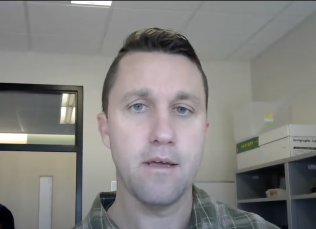
3-2-1 Video: Peer Instruction
Join Grant Gardner in this short, 2 minute video as he discusses showing faculty how to be more deliberate in making their classrooms more accessible to their students.
Grant Gardner discusses showing faculty how to be more deliberate in making their classrooms more accessible to their students.
Transcript
Hello my name is Grant Gardner, and I am an Assistant Professor of Biology Education at Middle Tennessee State University. I had the opportunity to work on the UDL project as a faculty member at ECU. So one of the things I do that I like to think about in my research is faculty development. So one of the things that I help faculty do is think about how they can make their classes more accessible to students in fields like Biology or other STEM fields. We've been thinking a lot in my research team about how we can take things that faculty are already doing - such as things like peer instruction. I’m going to provide this model here of what peer instruction is if i can hold it up. This is a model of using deliberate step by step methods of asking students questions that would represent on a overhead display.
We’ve taken some of these methods that faculty are already using like peer instruction and other acts of learning methods and tried to get them to think a little more deliberately about how and what they're already doing in their classroom might fit into the UDL guidelines. So for example, something like peer instruction that I just showed you. The guidelines up here that many of you have seen might align with many aspects of benchmarks of the Universal Design of Learning framework anyway. For examples, using multiple media for communication, fostering collaboration, and so these are all aspects that we try to help faculty understand. So in conclusion, essentially we have faculty doing great things in the classrooms and think that their classrooms aren't accessible - were trying to help them think about ways more deliberately that they’re classrooms are accessible for diverse students.
Thanks.
Support for this Module
Original development of this module was made possible by the College STAR (Supporting Transition Access and Retention) initiative. College STAR was a grant-funded project focused on partnering postsecondary educational professionals and students to learn ways for helping postsecondary campuses become more welcoming of students with learning and attention differences. Much of this work was made possible by generous funding from the Oak Foundation.
Organization/Publishers:
Share this resource:
Posted date:
November 11, 2022
